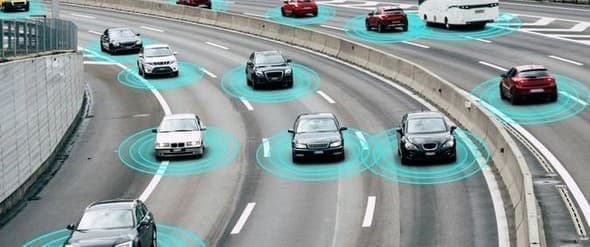There has been a lot of hype around autonomous driving in recent years, with several autonomous passenger vehicles being tested across cities worldwide. But when it comes to public transport, it appears to be lagging behind cars in terms of automation. And with the announcement of the launch of the U.K.’s first autonomous bus route, the question arises – why isn’t there more autonomous transportation in cities around the world?
The image of self-driving vehicles has long been glorified in the media, with movies from decades ago showing sleek autonomous cars and trains as something futuristic that may potentially be achieved in time. But by 2020, the European Commission (EC) published an article “Driverless shuttles: what are we waiting for?” And we seem to have made little progress to date – at least in the eyes of the public. So, what’s the holdup?
Driverless modes of transport have been being tested in restricted areas for several years, but we have yet to see most of them on our roads. In the EC article, Professor Dimitri Konstantas at the University of Geneva in Switzerland stated “We believe that AVs will become the new form of transport in Europe… We want to prove that autonomous vehicles (AVs) are a sustainable, viable and environmental solution for urban and suburban public transportation.” Related: China Is Still Critical To America’s Clean Energy Boom
The lack of driverless public transportation seems surprising considering that some of the world’s existing autonomous train services were launched decades ago. For example, the grade 3 automation system has been used on the Sao Paolo metro Line 3 in Brazil since 1979, and the U.K.’s grade 3 Docklands Light Railways was launched in 1989. This grade means the vehicle can operate autonomously but can also be controlled by a driver.
While we are yet to see a wide variety of AVs on our roads, the market is expected to expand significantly in the coming years in line with technological innovations and growing demand. According to a 2022 study, the global autonomous train technology market was valued at $7.41 billion in 2021, a figure that is expected to increase to $10.11 billion by 2026, growing at a CAGR of 6.43 percent.
But one of the main barriers to the rollout of AVs is safety concerns. While the technology may be ready to power driverless vehicles, most modes of autonomous transport have only been tested in restricted areas, not in a real-world setting. The unpredictability of other drivers, bikers, pedestrians, and various other hazards seen in towns and cities around the world make the success of the technology a lot less certain outside the confines of a test area.
William Levassor, COO of Autonomous Mobility at French-based public transport company Transdev, explained “It’s essential that operators know the ground, the field, the cities that they’ll be working with, [and] it is equally as important that they are involved in the tech side of things. It’s not enough for the technology to be developed and then for operators to just go and operate the vehicle. They need to have a deeper understanding of what makes the system safe, what the limitations are and how the operator is playing a role in the system’s safety.”
So, when and where can we expect to see the next autonomous transportation systems? A new European consortium that follows on from the H2020 AVENUE consortium, which ran from 2018 to 2022, was launched this year to develop the Horizon Europe ULTIMO project. With a budget of $60 million over four years, the group will develop an automated minibus service in three test cities in Europe – Geneva, Switzerland, Kronach, Germany, and Oslo, Norway. The EC will be providing $24 million of the funding for this project. By 2025, the consortium expects to launch 45 driverless electric minibuses for a year in these locations to assess the potential for permanent automated transport routes.
And, this month, the U.K. launched its first full-sized autonomous bus service, described by the developers as a milestone in automated transport. The AB1 services run on a 14-mile route in Scotland. It is expected to cater for up to 10,000 passengers a week, with a single ticket costing around $9. The U.K. public transport operator Stagecoach stated that the launch marked an “important milestone for autonomous technology,” and that it was “believed to be the first registered bus service in the world to use full-sized autonomous buses.”
The bus route will run on a trial period until 2025, with a fleet of five buses. The maximum speed limit of the vehicle is set at 50 mph, and it will be expected to travel at different speeds in mixed traffic conditions. The buses work using a range of sensors and artificial intelligence. A human safety driver will be present on all journeys during the trial to ensure the vehicle is safe.
While much of the transition from driver-operated to driverless vehicles has happened behind closed doors, the technology has come a long way over the last decades, and we are finally seeing examples of automated public transport services. Yet, these remain limited due to safety concerns, with many companies now looking to test their vehicles in real-world conditions. With the launch of a minibus service across Europe, a full-size bus service in Scotland, and several autonomous metro routes worldwide, we can expect to see several more driverless transport routes in the coming years, but it will likely take several decades to become the norm for public transportation.
By Felicity Bradstock for Oilprice.com
More Top Reads From Oilprice.com:
- 2.7 Million Bpd Of Crude In Alberta Under Extreme Wildfire Threat
- Oil Prices Rise Amid Expectations Of A Tightening Market
- Putin Says OPEC+ Cuts Were To Maintain High Oil Prices

















